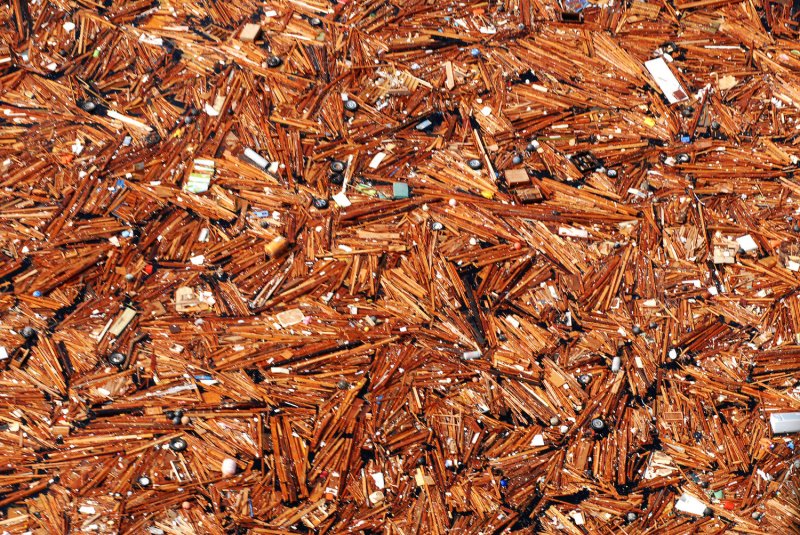An aerial view shows debris in the Pacific Ocean on March 13, 2011 after an 8.9 magnitude earthquake and subsequent tsunamistruck northern Japan. The debris was inspected by a helicopter-based search and rescue team from the aircraft carrier USS Ronald Reagan. Ships and aircraft from the Ronald Reagan Carrier Strike Group are searching for survivors in the coastal waters near Sendai, Japan. UPI/Dylan McCord/U.S. Navy |
License Photo
WASHINGTON, Dec. 28 (UPI) -- U.S. researchers say ocean debris from the tsunami that struck Japan March 11 could pass near or wash ashore the Hawaiian Islands as early as this winter.
Scientists with the National Oceanographic and Atmospheric Administration say computer models also show the floating debris could approach the West Coast of the United States and Canada in 2013, and circle back to the main Hawaiian Islands in 2014 through 2016.
The Japanese government estimates the tsunami generated 25 million tons of rubble, but it is not known how much debris was swept into the water, a NOAA release said Wednesday.
As the tsunami surge receded, it washed much of what was in the coastal inundation zone into the ocean.
Boats, smashed buildings and plastic, metal and rubber objects of all shapes and sizes washed into the water and formed large debris fields captured by satellite imagery and aerial photos of the coastal waters.
The worst-case scenario, NOAA said, would be boats and unmanageable concentrations of other heavy objects washing ashore in sensitive areas, damaging coral reefs, or interfering with navigation in Hawaii and along the U.S. West Coast.
On the other hand, researchers acknowledge, the debris could break up, disperse and eventually degrade, sparing coastal areas.
"We're preparing for the best- and worst-case scenarios -- and everything in between," Nancy Wallace, director for NOAA's Marine Debris Program, said.















